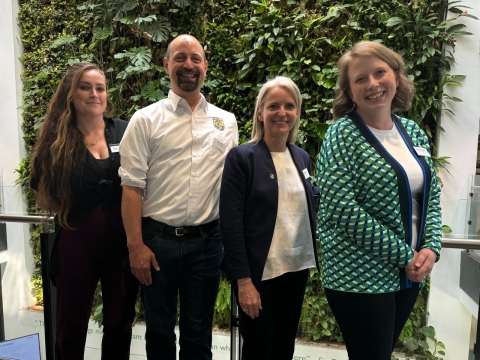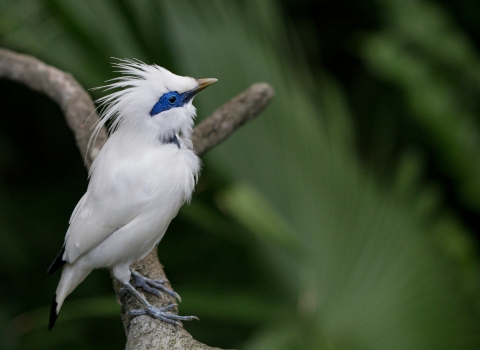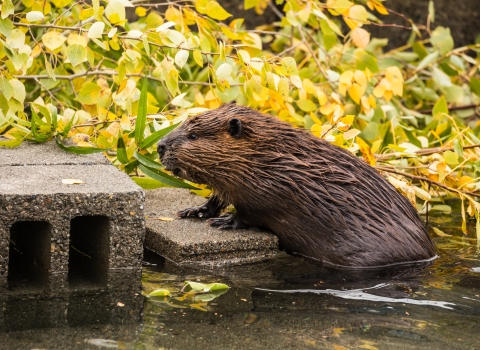In 2024, the Division of International Conservation, within the U.S. Fish and Wildlife Service's International Affairs program, was the world's first government office to be designated an Evidence Champion. Our path to this prestigious recognition and the Evidence Champion network has been shaped by decades of engagement with and support to conservation leaders in local communities, through treaties such as the Convention on International Trade in Endangered Species of Wild Fauna and Flora (CITES), and by collaborating with various national wildlife authorities around the world.
As we look forward to future collaborations, we would like to recognize our history of working with others and celebrating our achievements and partnerships in evidence-based practice.
Timeline
1990: USFWS International Affairs makes its first award, through the African Elephant Conservation Fund within its Division of International Conservation.
Since 1990, the Division of International Conservation has supported conservation partners and key wildlife species in Latin America, Asia, and Africa. These efforts have significantly contributed to the existing evidence base via International Union for Conservation of Nature (IUCN) species specialist groups, wildlife surveys, socioeconomic research projects – and even formal analysis of effectiveness, such as in the paper “Effectiveness of 20 years of conservation investments in protecting orangutans” [1], produced by one of our grantees.
2011: The Division of International Affairs becomes the first U.S. government program to join the Conservation Measures Partnership (CMP), followed by the entire USFWS agency joining as a member in 2014.
Our early affiliation with CMP enabled our programs to be early adopters of the Open Standards for the Practice of Conservation (now Conservation Standards) to plan for program results and facilitate training for emerging conservationists in USFWS programs like the MENTOR Fellowship Program. MENTOR builds in-country capacity and unites emerging conservation leaders for academic and field training, long-term mentoring, experiential learning, and project implementation.
2016–2018: The Foreign Aid Transparency and Accountability Act of 2016 passes, followed by the Foundations for Evidence-Based Policymaking Act of 2018.
These pieces of legislation led to the Division of International Conservation creating the agency’s first program evaluation officer, a role informed by U.S. government guidance to develop more capacity and personnel for evaluation and evidence-building at the agency level. Dr. Matt Muir began this role and continues to fulfill it today. See evaluation.gov for more information on evidence and evaluation within the U.S. government.
2020: The Division of International Conservation launches a partnership with the Canadian Centre for Evidence-Based Conservation (CEBC) to assess the existing evidence base.
The Division’s first learning questions are captured in the Department of the Interior’s evaluation and evidence-building activities (see DOI evidence webpage). This partnership led to the agency’s first evidence map that summarizes all current research on the effectiveness of counter-wildlife crime interventions in Africa, Asia, and Latin America [2,3].The map was also associated with the Collaboration for Environmental Evidence, and features key insights from DIC staff in our Eurasia, Africa and Combating Wildlife Trafficking Branches. See theconversation.com for an article discussing the findings.
2022: USFWS advocates for considering evidence-based conservation for all funding institutions.
USFWS joins 25 other funding organizations in a letter to Conservation Biology, “Funding evidence-based conservation” [4]. This collaborative letter offers practical approaches to ensure grant applications are more evidence-based.
2023: USFWS DIC begins to seek evidence in the language of their proposals.
The USFWS Western Hemisphere program became the first DIC branch to encourage applicants to show that proposals are based on the best available evidence in a USFWS call for proposals (also known as a Notice of Funding Opportunity or NOFO). Today, it is standard language across all DIC’s NOFOs. (Check out DIC’s Funding Opportunities in Fiscal Year 2024).
2024: USFWS DIC joins Evidence Champion Program.
The designation was announced at the 2024 Cambridge evidence workshop alongside colleagues, Daphne Carlson, Tatiana Hendrix, Shannon Noelle Rivera, and Matt Muir. Future collaborations discussed include development of evidence-based guidance, establishing conservation routines to test effectiveness, and exploring how machine learning can aid our conservation processes.
“We are excited to become part of the growing community of conservationist organizations that champion evidence-based conservation,” added Matt Muir, USFWS’ first Evaluation Officer. “We may be the first government program to join, but we won’t be the last. Together, we can enhance the effectiveness of our conservation actions and ensure a sustainable future for wildlife.”
As USFWS Division of International Conservation and Conservation Evidence strengthen our partnerships, the goal becomes to not only expand effective practices but to unite the global conservation community around this shared mission – of doing more of what works for our wildlife.
References
[1] Santika T. et al. (2022) Effectiveness of 20 years of conservation investments in protecting orangutans. Current Biology, 32, 1754–1763. https://doi.org/10.1016/j.cub.2022.02.051
[2] Rytwinski T. et al. (2021) What is the evidence that counter-wildlife crime interventions are effective for conserving African, Asian and Latin American wildlife directly threatened by exploitation? A systematic map protocol. Ecological Solutions and Evidence, 3, e12104. https://doi.org/10.1002/2688-8319.12104
[3] Rytwinski T. et al. (2024) What is the evidence that counter-wildlife crime interventions are effective for conserving African, Asian and Latin American wildlife directly threatened by exploitation? A systematic map. Ecological Solutions and Evidence, 5, e12323. https://doi.org/10.1002/2688-8319.12323
[4] Parks D. et al. (2022) Funding evidence-based conservation. Conservation Biology, 36, e13991. https://doi.org/10.1111/cobi.13991






